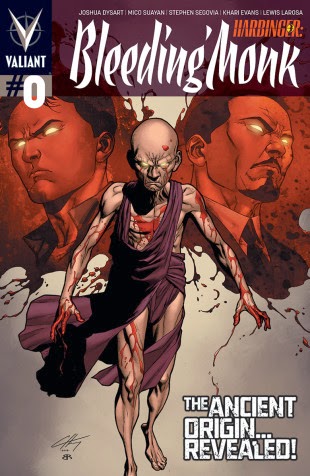Eternal Warrior #7
Writer: Greg Pak
Artist: Robert Gill
Colors: Guy Major
Letters: Dave Sharpe
Publisher: Valiant
Rating: 4.5/5
Elkin: It was that Italian philosopher George Santayana who said, “Progress, far from consisting in change, depends on retentiveness. When change is absolute there remains no being to improve and no direction is set for possible improvement: and when experience is not retained, as among savages, infancy is perpetual. Those who cannot remember the past are condemned to repeat it. “
He also said, “Eternal vigilance is the price of knowledge.”
I bring up these two quotes because Greg Pak and Robert Gill's Eternal Warrior #7 resonates with these sentiments. Once again, the 4001 A.D. adventures of Gilad Anni-Padda, the Eternal Warrior, echoes with the Luddites fear of progress, the inevitability of all technology in the hands of man being crafted to kill, and how innocence is subsumed by man's inherent capacity for cruelty.
Yea, I know, it's heavy stuff, but what would you expect in comic that revolves around an eternal WARRIOR? When I reviewed issue #6 of this series I wrote, “Pak writes weariness of character perfectly. Without having to say it, we know the Eternal Warrior has been through all of this before, knows how it will end, and would rather not be part of it.“ This weariness is even more evident in issue 7, but here, now, our hero has a clarity of cause and, though he remembers the past, he once again comes face to face with the tools necessary to repeat it. The only way to save those he loves is to start the cycle of killing again.
Pak gives his character a noble but loathsome purpose. Because of his eternal vigilance, he knows this particular form of eternal recurrence.
But Pak also sprinkles in the possibility of hope – Gilad's granddaughter Caroline. “She thinks the things we humans make can actually make the world a better place,” he ruminates. But then he punctuates it with “She hasn't seen what I've seen.”







